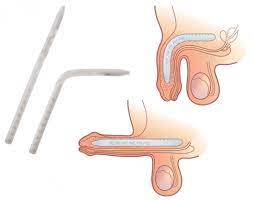Erectile Prosthesis

Phalloplasty is the procedure to rebuild the penis, usually with tissue (a “graft”) taken from the forearm. It is recommended to have the forearm (from which the graft will be taken) epilated with a laser a certain number of times. It is also very important to stop smoking in order to avoid graft atrophy. Surgery Patients are hospitalized the day before the operation to undergo preoperative colonic preparation (intestinal purge). This intervention is always performed by two teams. The urologist operates from the start of the operation in the genital or perineal position. He uses the labia minora of the vulva to reconstruct the fixed or horizontal part of the urethra. This extends the urine outlet to the front of the pubis. The urologist moves the labia majora to reconstruct a normal male scrotum. During the operation, the surgeon reconstructs a normal male scrotum by moving the labia majora. Through an incision made under the lower abdomen and at the height of the groin, it prepares the nerves and blood vessels where the anastomoses or connections to the tissue of the penis will then be made. A skin graft is transplanted where the skin and fatty tissue were removed. The arm remains scarred and will appear a bit thinner. The operation takes about 8 to 9 hours and the patient stays in the hospital for about 2.5 weeks. In some cases, thigh tissue can also be used. An early complication may be for a clot to form in the artery supplying the graft. Further surgery is then necessary to restore blood circulation. As with any surgery, other possible early complications are bleeding, difficult healing, or infection. After phalloplasty, almost all trans men can urinate while standing up and have an orgasm. To be able to perform penetration, however, it is necessary to have an erectile prosthesis, which can be implanted from 12 months after the phalloplasty.
Bear in mind
Free Consultation

